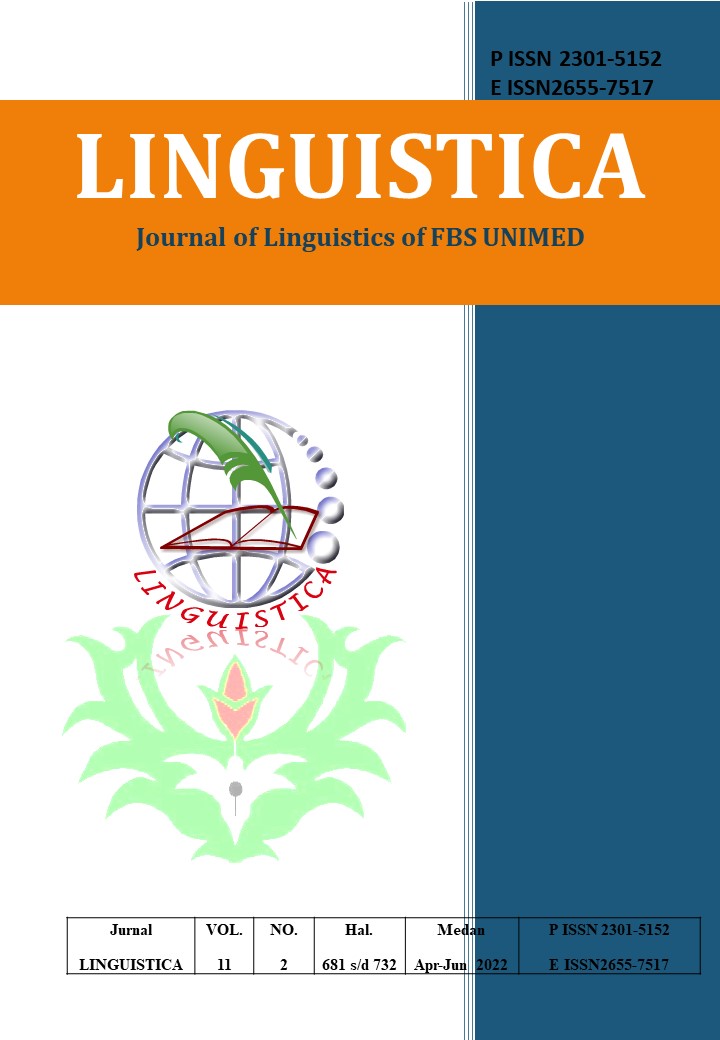WOMEN AS HIDDEN FIGURES IN MALE HEGEMONY: GENDER AND RACIAL IDEOLOGIES IN HIDDEN FIGURES
DOI:
https://doi.org/10.24114/jalu.v11i2.37754Abstract
This study intended to use the film Hidden Figures as a case study to examine how Black women were discriminated against in multiple ways: in terms of racism and sexism, and even classism. To further analyze how Black women, here Mary Jackson, Dorothy Vaughan, and Katherine Johnson, had limited access to employment and received lower wages as well, the study used the film Hidden Figures as a case study to consider how Black women allowed themselves to be treated subordinately and tolerated unequal treatment in the workplace in order maintain their job for the sake of their family. To complete this goal, after conducting a thorough literature review on racial discrimination, gender discrimination, Black feminism, and intersectional hierarchy, the study used a descriptive qualitative analysis and a latent-content analysis of Hidden Figures to examine how, in the 1960s and 1970s, Black women were disciplined and deprived of the opportunity to seek higher education or demonstrate their leadership skills. Moreover, this study demonstrated that, although they had been the object of personal or institutional discrimination, these Black women managed to survive in a multifaceted discriminatory hierarchal society. Finally, by resisting, they found success in their workplace.References
Andersen L. M., & Taylor, H. M. (2013). Sociology: The Essentials. Belmont: Wadsworth.
Bessonova, M. (2010). Soviet perspective on the Cold War and American foreign Policy. In Lee Trepanier, Spasimir Domaradzki, & Jaclyn Stanke (Eds). Comparative Perspectives on the Cold War National and Sub-National Approaches (pp.41-58). Poland: AFM Publishing House.
Collins, P. H. (2009). Black Feminist Thought: Knowledge, Consciousness, and the Politics of Empowerment. New York: Routledge.
Crawley, R. (2006). Diversity and the marginalisation of black women™s issues. Policy Futures in Education, 4(2): 172“184.
Crenshaw, K. W. (1989). Demarginalizing the intersection of race and sex: A black feminist critique of antidiscrimination doctrine, feminist theory, and antiracist politics. University of Chicago Legal Forum, 139: 138“67
Crenshaw, K. W. (1991). Mapping the margins: Intersectionality, Identity Politics, and Violence Against Women of Color. Stanford Law Review, 43(6): 1241“99.
Feagin, J. R. (2001). Racist America: Roots, Current Realities, and Future Reparations. New York Routledge.
Hall, J. C., Everett, J. & Hamilton-Mason, J. (2012). Black women talk about workplace stress and how they cope. Journal of Black Studies, 43(2), 207-226.
Herbst, P. H. (1997). The Color of Words: An Encyclopaedic Dictionary of Ethnic Bias in the United States. Yarmouth, ME: Intercultural Press.
hooks, b. (1982). Ain™t I A Woman: Black women and Feminism. London: Pluto Press
Kennedy, S. (1990). Jim Crow Guide: The Way It Was Paperback. FL: University Press of Florida.
King, D. K. (1988). Multiple jeopardy, multiple consciousness: The context of a black feminist ideology. Signs: Journal of Women in Culture and Society, 14(1): 42“72.
Lenhardt, R.A., & Paul-Emile, K. (2018). All the women are white, all the blacks are Men, but some of us are brave. Fordham Law Review Online, 87(13): 68-72.
Lhamon, W. T. (2003). Jump Jim Crow: Lost Plays, Lyrics, and Street Prose of the First Atlantic Popular Culture. Cambridge: Harvard University Press.
Melfi, T. (2006). Hidden Figures. LA, CA: Fox 2000 Pictures.
Rigueur, L.W., & Beshlian, A. The history and progress of black citizenship. Du Bois Review, 16(1), 267“277.
Rose, P. I. (1997). They and We: Racial and Ethnic Relations in the United States. New York: The McGraw-Hill Companies, Inc.
Scarborough, C. (1989). Conceptualizing black women™s employment experiences. The Yale Law Journal, 98(7), 1457-1478.
Schroeder, A., Melfi, T. (2005). Hidden Figures.
chrome-extension://efaidnbmnnnibpcajpcglclefindmkaj/http://readwatchwrite.com/wp-content/uploads/2019/12/23_Screenplay_Hidden-Figures.pdf. Accessed 22 May 2019.
Shetterly, M. L. (2016). Hidden Figures: The American Dream and the Untold Story of the Black Women Who Helped Win the Space Race. New York, NY: William Morrow Paperbacks.
Walker, A. (1984). In Search of Our Mothers™ Gardens. Womanist Prose. London: The Women's Press.
Ware, L. (2013). Civil rights and the 1960s: A decade of unparalleled progress. Maryland Law Review, 72(4), 1087-1095. https://digitalcommons.law.umaryland.edu/mlr/vol72/iss4/4
Downloads
Issue
Section
License
Copyright (c) 2022 HUNG-CHANG LIAO, YA-HUEI WANG

This work is licensed under a Creative Commons Attribution-ShareAlike 4.0 International License.
Authors who publish with this journal agree to the following terms:
- Authors retain copyright and grant the journal the right of first publication with the work simultaneously licensed under a Creative Commons Attribution License that allows others to share the work with an acknowledgment of the work's authorship and initial publication in this journal.
- Authors are able to enter into separate, additional contractual arrangements for the non-exclusive distribution of the journal's published version of the work (e.g., post it to an institutional repository or publish it in a book), with an acknowledgment of its initial publication in this journal.
- Authors are permitted and encouraged to post their work online (e.g., in institutional repositories or on their website) prior to and during the submission process, as it can lead to productive exchanges, as well as earlier and greater citation of published work (See The Effect of Open Access).
- This work is licensed under a Creative Commons Attribution-ShareAlike 4.0 International License.

